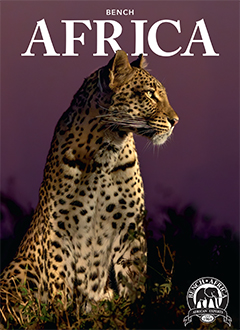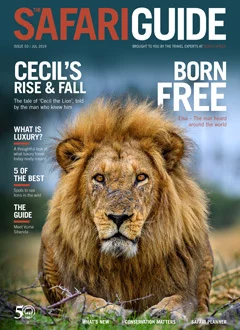The world listened with a very heavy heart when we heard that Sudan, the world’s last remaining male northern white rhino had died at his home in Ol Pejeta Conservancy in Kenya on March 19th, 2018.
The news was received with international dismay and outrage.
The last male northern white rhino is dead, but there is still time for his species....
First of all, how did we let it come to this?
Sudan was being treated for age-related complications that led to degenerative changes in muscles and bones combined with extensive skin wounds. Sadly, his condition worsened significantly and the decision was that the kindest thing to do was to euthanize him and end his suffering.
Sudan leaves behind a legacy in his unusually public and memorable existence. In the 1970s, he escaped extinction of his kind in the wild because he was moved to Dvůr Králové Zoo. Years later he was moved back to Kenya, his home – to live out the rest of his days under 24-hour armed surveillance.
Sudan significantly contributed to the survival of his subspecies, siring two females and more recently his genetic material was collected in the wake of his death, providing hope for future attempts at reproduction of northern white rhinos through advanced cellular technologies.
Here is a full timeline of Sudan's long life.
“We on Ol Pejeta are all saddened by Sudan’s death. He was a great ambassador for his species and will be remembered for the work he did to raise awareness globally of the plight facing not only rhinos, but also the many thousands of other species facing extinction as a result of unsustainable human activity. One day, his demise will hopefully be seen as a seminal moment for conservationists world-wide,” said Richard Vigne, Ol Pejeta’s CEO.
Sadly, Sudan’s passing leaves just two female northern white rhinos in existence; his daughter Najin and his grand daughter Fatu, both of whom remain at Ol Pejeta. The only hope for the preservation of this subspecies now lies in developing in vitro fertilisation (IVF) techniques using eggs from the two remaining females, stored northern white rhino semen from males and surrogate southern white rhino females.
How on earth did we get to this point?
The poaching crisis of the 1970s and 80s, fuelled by demand for rhino horn in Traditional Chinese Medicine in Asia and dagger handles in Yemen, completely eradicated northern white rhino populations in Uganda, Central African Republic, Sudan and Chad. The last remaining wild population made up of 20-30 rhinos in Garamba National Park in the Democratic Republic of the Congo succumbed to fighting in the region during the 1990s and early 2000s. By 2008 the northern white rhino was all but declared extinct.
In 2009, the last four fertile northern white rhinos – two males and two females – were moved to Kenya from the Czech Republic in the hopes that their natural habitat would encourage a better outcome for breeding.
The rhinos were moved from Dvůr Králové Zoo to Ol Pejeta and on arrival were placed under 24 hour armed guard, and were put on a supplemented diet regime. Despite all efforts, and although the rhinos were seen mating, there were no successful pregnancies.
By 2014 plans changed and experts decided to introduce a male southern white rhino to the two female northern whites hoping to create hybrid offspring so that they could attempt to conserve some of the northern white genes. Sadly, this too was an unsuccessful mission and with further tests they discovered that neither of the females was actually capable of natural reproduction, and in fact only one was fertile enough to conceive artificially. Sadly Suni – the second to last northern white rhino died in the latter half of 2014, also of natural causes.
In response to this news, World Wildlife Fund (WWF) issued the following statement from Bas Huijbregts, African species manager:“This is a wake-up call to humankind that our actions have irreversible consequences for the species we cherish. Though it's too late to change the fate of the northern white rhino, if we learn from our mistakes and commit to not repeating them, there’s still plenty we can save. More urgently than ever we need to protect functioning ecosystems on which large mammals depend, and to fight the illegal wildlife trade which doomed Sudan and his kind, so that the world’s remaining rhinos do not meet the same end.”
How is it possible there is still hope?
With options running out, scientists are attempting to develop “artificial reproductive techniques” (or ARTs), including IVF to rescue this subspecies. To that end, Ol Pejeta Conservancy and Dvůr Králové Zoo are now partnering with IZW Berlin, Embryo Plus, Avantea Cremona and the Kenya Wildlife Service to try and conduct the first-ever procedure to safely remove egg cells from remaining females, fertilize these with semen previously collected from northern white males, and insert the resulting embryos into female southern white rhinos acting as surrogates. This would be a ground-breaking mission and one that has never been done before with rhinos.
“Sudan was the last northern white rhino that was born in the wild. His death is a cruel symbol of human disregard for nature and it saddened everyone who knew him. But we should not give up. We must take advantage of the unique situation in which cellular technologies are utilized for conservation of critically endangered species. It may sound unbelievable, but thanks to the newly developed techniques even Sudan could still have an offspring,” said Jan Stejskal, Director of International Projects at Dvůr Králové Zoo. “We will be happy for everyone who will help us in our joint effort.”
The estimated cost of IVF – from the development of the method, to trials, implantation and the creation of a viable breeding herd of northern whites – could be as much as US$ 9 million. Yet this is the hope for preserving an entire subspecies. Ol Pejeta and Dvůr Králové Zoo are asking supporters to donate towards this campaign in memory of Sudan, to help them to raise the funds needed before it’s too late.
Some of us here at Bench Africa had the great honour of meeting Sudan, he touched our hearts and we are truly saddened by his passing. From the bottom of our hearts - a huge thank you to all the wonderful people at Ol Pejeta Conservancy who watched over him and to Dvůr Králové Zoo who did the best by him by returning him to Africa. We can't begin to imagine the hurt you must be feeling right now. Our thoughts are with you. Now we wish you well in your fight to revive this species. You are absolute heroes.
How can I help?
Please join Bench Africa in donating to this worthy cause!
http://donate.olpejetaconservancy.org/projects/sudan
OR
You can also visit Ol Pejeta and contribute in person. Join our Kenya Highlights tour where you can see where Sudan lived out his last remaining years, and meet his family - the two last remaining northern white rhinos on the planet.
If we do not urgently change the way that we interact with the natural world and the way in which we consume, we will soon be left with a home that is almost totally barren, a world where wild things and wild places are but a thing of the past. Let's not wait for that day. Let's make a change. Now.
We hope that Sudan's legacy ensures that we never again have to hear this story.
Never again do we want to have to utter those horrible words… "the last of his kind".
Rest in Peace Sudan
CREDIT: MAKE IT KENYA PHOTO / STUART PRICE.


















